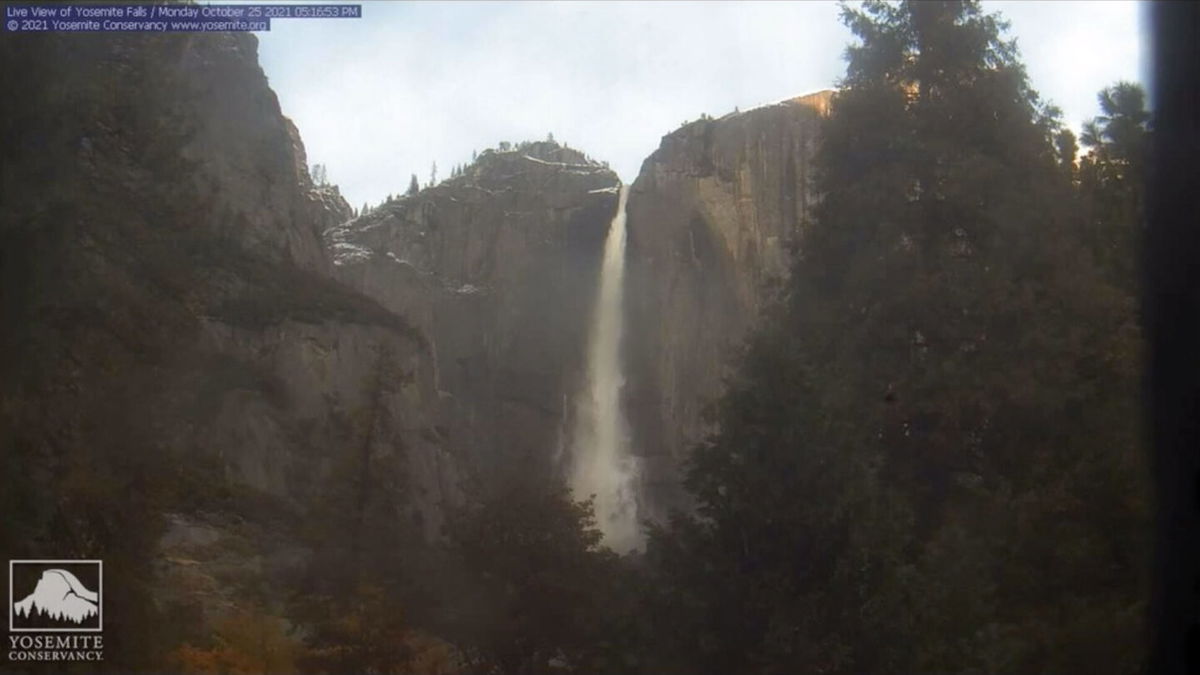Yosemite Falls is flowing again thanks to that major storm that walloped the drought-choked US West

Yosemite Falls flows again on October 25
By Michelle Krupa, CNN
Yosemite Falls is again hosting its famous deluge after record-shattering rainfall this week in California following an extremely dry summer and extensive drought.
Water surged over the 2,425-foot falls Monday, just four days after the same majestic rock face appeared as only a dry canvas for the sun’s glow, Yosemite National Park’s webcam feeds showed.
About 7 inches of rain came down across Yosemite National Park from late Sunday evening through late afternoon Monday — with lower totals in the southern and western sections — said Jerald Meadows, meteorologist-in-charge at the National Weather Service office in Hanford, California.
“That’s definitely getting into that historical rainfall realm,” he told CNN on Tuesday. “It’s definitely significant.”
The considerable rain owed to a chart-topping “atmospheric river” that coincided last weekend along the West Coast with a storm system known as a “bomb cyclone.”
The conditions made for the season’s first heavy, wet snow across the Sierras and soaking rains for the coastline and valleys across central and Northern California. The system has since pushed east, ushering severe storms Tuesday into the Plains.
“We had quite a storm, with over six inches of rain in Yosemite Valley over the past 36 hours,” park managers posted Monday to Facebook.
“We don’t have any direct measurements, but sensors suggest a few feet of snow fell at the higher elevations. Snow level for much of the storm was high, causing rivers and creeks to rise substantially (8.5 feet on the Merced River at Pohono Bridge, 1.5 feet below flood stage).”
The storm system indeed broke records in coastal areas, with San Francisco seeing by “far the wettest Oct day ever.” Sacramento set a new 24-hour rainfall record, the weather service office there said.
“It’s been a while since we’ve seen water moving across the falls,” Meadows said of Yosemite’s natural wonder, nodding to California’s long and ongoing drought.
“What typically brings us good waterfalls over Yosemite Falls is our snow pack, and last year, snow pack was very minimal,” meaning the flow that usually lasts until June or July “dwindled in March and April,” he told CNN.
The falls are flowing really well now, in part, because of how little rain was absorbed into the parched soil, said Meadows.
“So, it may be a faster dry-up than normal … a more brief period of flows than we normally see,” he said.
As for how long Yosemite Falls might maintain its iconic grandeur, “all indications right now are we are looking at a drier-than-normal precipitation year,” Meadows said. “The falls could yet again become dry into the November-December time frame.”
The-CNN-Wire
™ & © 2021 Cable News Network, Inc., a WarnerMedia Company. All rights reserved.